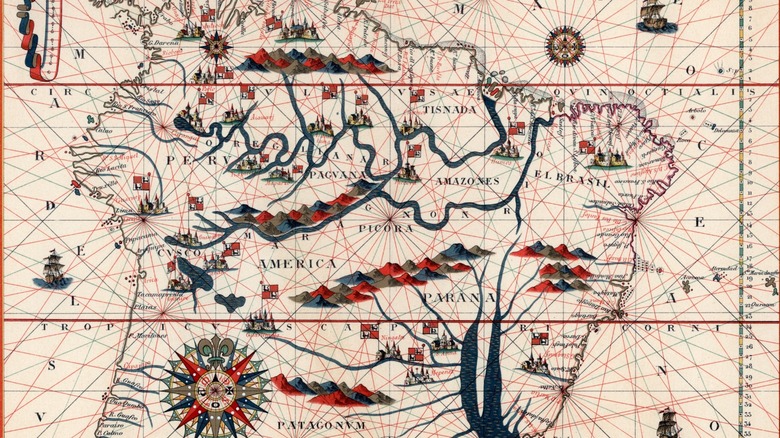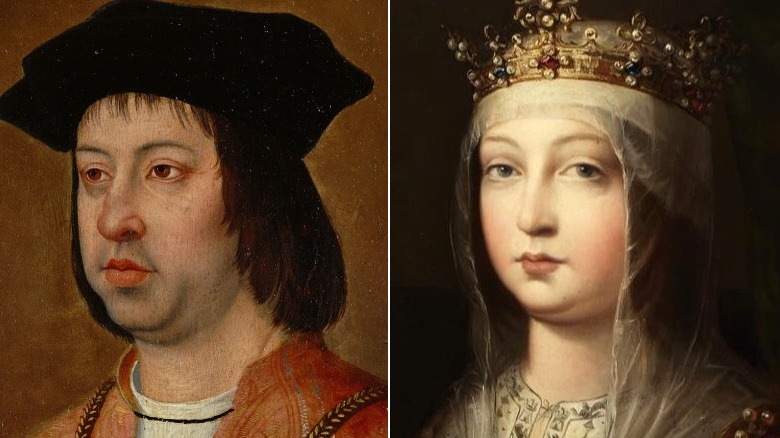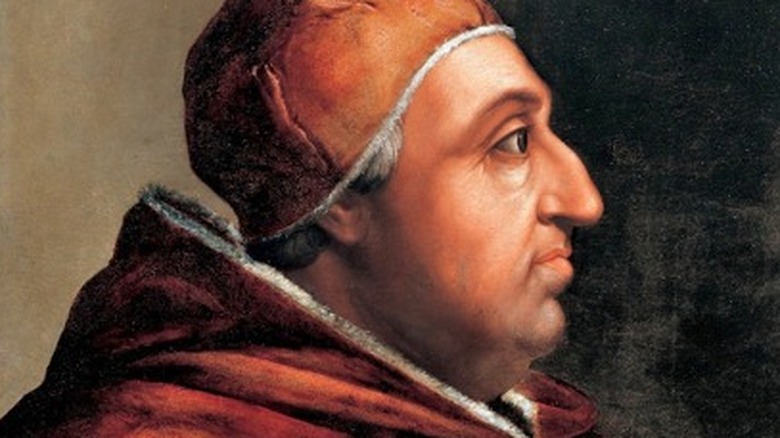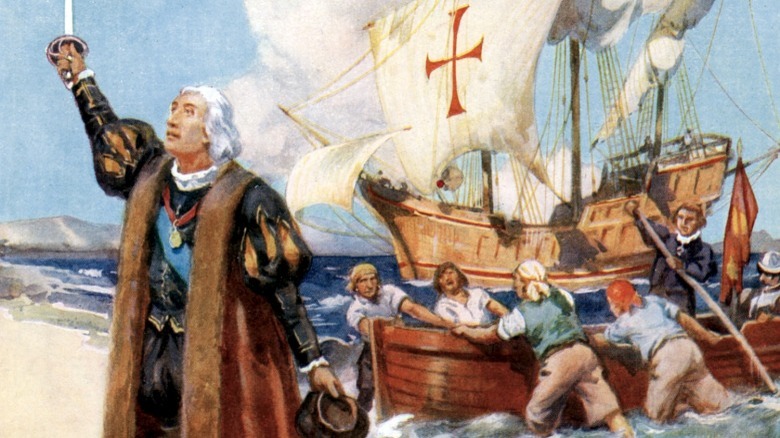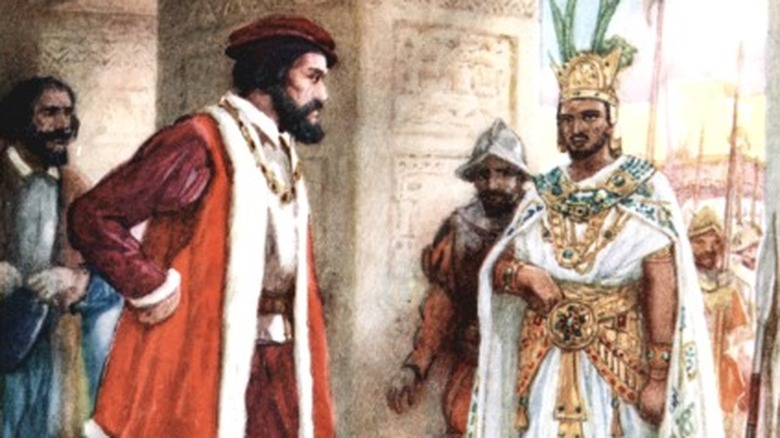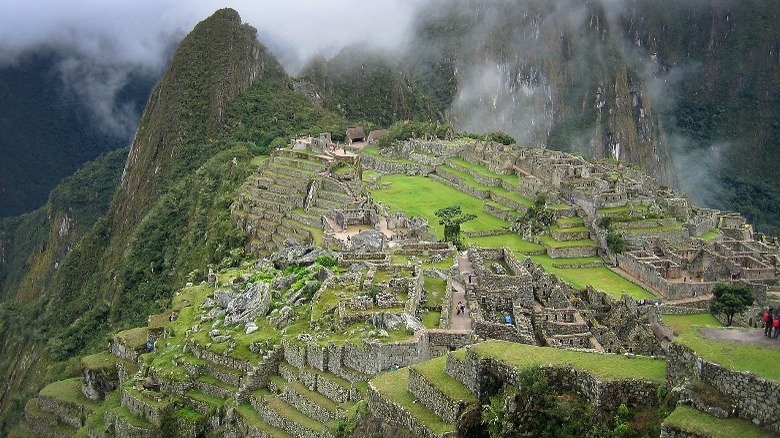Pope Alexander VI's Papal Bull Had A Disastrous Effect On The Native American Population
Colonization is an integral part of the history of the Americas. The period between the 1400s and the 1700s is known variously as the Age of Exploration or the Age of Discovery, according to World Atlas. During those centuries, European countries were expanding their reach beyond their own continent and sending explorers across the globe.
It seemed like new lands were almost constantly being discovered, especially on the two continents that would be dubbed the "New World." One of the most powerful countries that began establishing their presence early on in these new places was Spain. Like many other European countries, they were in search of new resources, but above all else they were looking for silver and gold. Lucky for them, the Americas were abounding in many of the things the Spanish were in search of. However, there were obstacles in the way, including the Native Americans who already inhabited this land.
King Ferdinand and Queen Isabella
Spain's rise to become a world power was largely influenced by the marriage of Ferdinand of Aragon and Isabella of Castile. The joining of their two kingdoms would eventually lead to a complete union of the multiple Spanish principalities that existed at the time. Their rule also led to the Spanish Inquisition (per World Atlas), an effort to combat heresy and unite the country under one religion. Both rulers were staunch Catholics.
This king and queen were ambitious individuals on multiple fronts. In addition to their efforts to convert their subjects into good Christians, they also encouraged exploration of the New World. According to History, Ferdinand and Isabella were the ones who ended up sponsoring Italian explorer Christopher Columbus on his legendary journey during which he stumbled upon the Americas. Columbus then claimed those lands in the name of Spain, thus beginning their colonization of this new territory. According to another post at History, their choice to pursue this path resulted in years of imperial supremacy and prosperity for the country. Unfortunately, that choice came at a very high price.
Pope Alexander VI
During Ferdinand and Isabella's reign (per Britannica), the head of the Catholic Church was Pope Alexander VI. Also known by his given name, Rodrigo Borgia, he was one of the most controversial pontiffs to ever head the church. Despite the chaos and drama associated with his rule, the fact that he was the leader of the Catholic Church at this time was significant. Pope Alexander VI was not just somewhat tied to Ferdinand and Isabella due to the fact that they shared the same religion. This particular pope was also of Spanish blood, as he was a part of the Borgia family line.
As he was arguably one the most powerful entities in the world at the time — by some estimates, the most powerful — Alexander VI was highly involved with the ruling families of Europe. In order to protect that power he made deals with various countries, including marrying one of his sons to a cousin of King Ferdinand of Spain (per Britannica).
Inter Caetera
Pope Alexander VI's connections to Spain were a huge advantage for the monarchy. Once they sent Christopher Columbus on his voyage in 1492 and it was a success, Ferdinand and Isabella made a request of the pontiff for a papal bull — a decree. ("Bull" came from the Latin word bulla, meaning the lead seal which was applied to such documents, per Britannica). Alexander VI obliged and issued the decree known as Inter Caetera.
Inter Caetera was issued May 4, 1493. According to Native Voices this document does multiple things for the Spanish crown. The most important thing is that does, however, is to grant permission for the kingdoms of Spain and Portugal to colonize any lands that they discover in the New World. It also decreed which parts of the New World belonged to each of those two kingdoms (per another article at Britannica), a decision that wasn't recognized by any other European power. The only exception is that they are not allowed to take over any lands that are already ruled by a Christian. Now, this may not have been as much of a problem, if there were not already native peoples inhabiting this land that was just now being "discovered."
Spanish colonization of South America
With the support of the pope, Spain began sending ships to the Americas regularly. Following Columbus' initial voyage, there were multiple expeditions that discovered many new places and expanded the Spanish Empire. A settlement named Santo Domingo on the island of Hispaniola was established in 1498, laying the foundation for the kingdom's future endeavors (per World History).
After the founding of Santo Domingo, more settlements began to pop up all over the islands and across what is now South America. In 1508 the Spanish settled Puerto Rico, and three short years later did the same in Cuba. After conquering the islands in the Caribbean, they moved on to South America and achieved much in a fairly short amount of time. Between 1519 and 1543, Spain established colonies in Panama, Mexico, and Peru. Additionally, the Spanish conquered the empires of both the Incas and the Aztecs.
The toppling of these kingdoms was obviously beneficial to the Spanish. It also resulted in horrible outcomes for the native peoples.
The Fall Out
Though the "New World" was a brand-new discovery to the Spanish, these lands were not really new at all. Native Americans inhabited both continents for thousands of years prior to European arrival. Over that time the Indigenous Peoples built multiple successful communities and empires that prospered. However, the appearance of the Spanish on their shores spelled disaster for much of the native population.
According to ThoughtCo., European colonization absolutely decimated the population of the Native Americans across both North and South America. Mexico's population reportedly declined by the millions and the natives of Hispaniola and Cuba were pretty much annihilated. Almost every native community experienced loss of some kind. While there were many lives lost in physical combat, more of the casualties are tied to the introduction of diseases like smallpox, to which the Native Americans had no immunity.
As if the violence of war and illness ravaging the people was not enough, the Spanish made sure to also crush what was left of the Indigenous culture. The colonizers oppressed the Indigenous religions and cultural beliefs, by doing things like burning their libraries and other treasures. These items were believed to be the work of the Devil and in an effort to convert and save the souls of the natives, they had to be destroyed. The Native Americans were exploited and taken advantage of, while having their lives and cultures stripped from them. The papal bull granted to Spain gave permission for colonization to take place, but unfortunately resulted in devastating and long-lasting effects on the Native American people.
